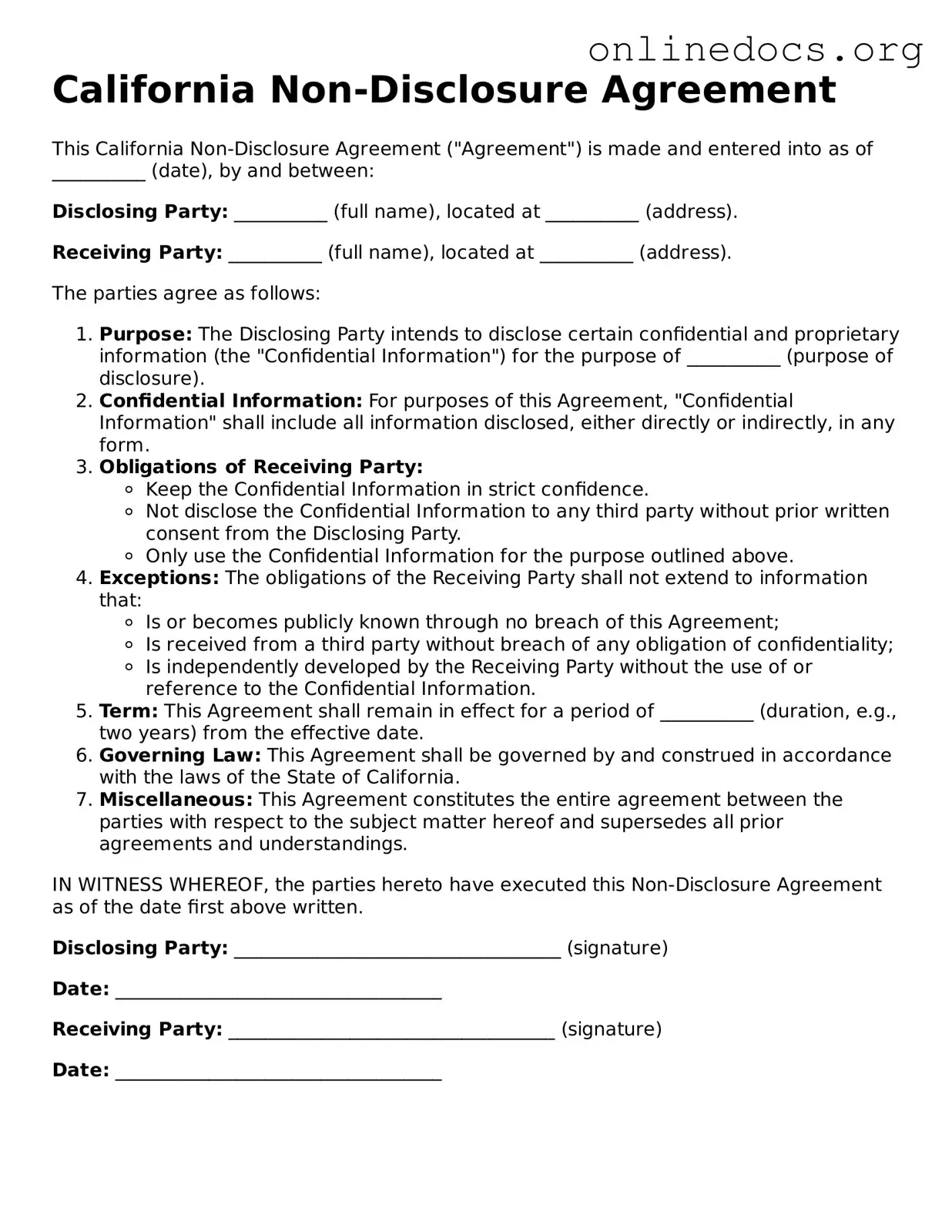A Mutual Non-Disclosure Agreement (MNDA) is similar to a California Non-Disclosure Agreement in that both documents protect confidential information shared between two parties. The MNDA specifically emphasizes that both parties are bound to confidentiality, ensuring that neither can disclose sensitive information without the other’s consent. This mutuality fosters trust and collaboration, especially in business partnerships where both sides share proprietary data.
A Confidentiality Agreement serves a similar purpose, focusing on the protection of sensitive information. Unlike a Non-Disclosure Agreement, which may be more formal, a Confidentiality Agreement can be less stringent and more flexible. It often outlines the types of information considered confidential and the obligations of the parties involved. This document is commonly used in various contexts, including employment and vendor relationships.
An Employment Non-Disclosure Agreement is tailored specifically for employees. It ensures that employees do not disclose proprietary information acquired during their employment. This type of agreement is crucial for companies that want to protect their trade secrets, client lists, and other sensitive business information. It typically includes terms regarding the duration of confidentiality and the consequences of breaches.
A Non-Circumvention Agreement often accompanies a Non-Disclosure Agreement. While the latter focuses on confidentiality, the Non-Circumvention Agreement prevents one party from bypassing the other to engage directly with a third party. This document is essential in situations where one party introduces another to potential business opportunities, ensuring that all parties benefit from the relationship.
A Proprietary Information Agreement (PIA) is another document that shares similarities with a Non-Disclosure Agreement. It specifically outlines the proprietary information owned by one party and establishes the terms under which that information can be used or disclosed. This agreement is particularly common in industries where intellectual property is a key asset, as it clearly delineates ownership and usage rights.
A Service Provider Non-Disclosure Agreement is designed for situations where a service provider may have access to sensitive information while delivering their services. This document protects the client's confidential information from being disclosed or misused by the service provider. It is essential for maintaining trust and safeguarding business interests in service-based relationships.
A Licensing Agreement may also bear similarities to a Non-Disclosure Agreement, particularly when it involves the sharing of proprietary information between a licensor and a licensee. While the primary focus of a Licensing Agreement is on the rights to use certain intellectual property, it often includes confidentiality clauses to protect any sensitive information exchanged during the licensing process.
To secure your assets and ensure your desires are fulfilled, creating a thoughtful comprehensive Last Will and Testament is essential. This document not only reflects your wishes but also helps your loved ones navigate the process after your passing, providing clarity and guidance during a difficult time.
Finally, a Partnership Agreement can include elements of a Non-Disclosure Agreement, especially when partners need to share confidential information to operate effectively. This document outlines the terms of the partnership while also addressing confidentiality concerns. It ensures that all partners understand their obligations regarding sensitive information, fostering a cooperative and secure business environment.
